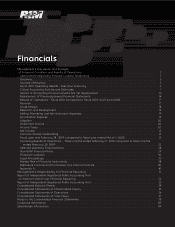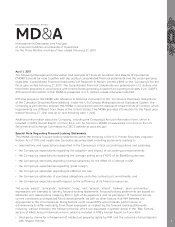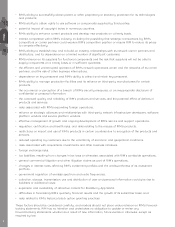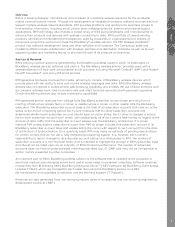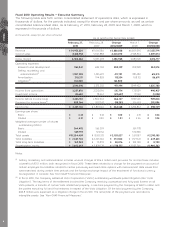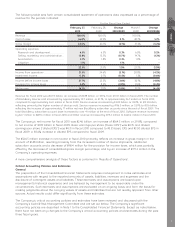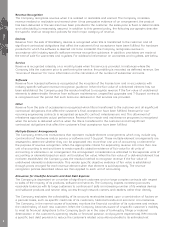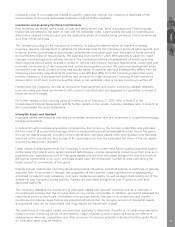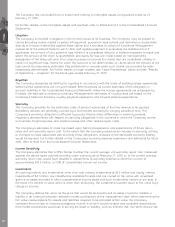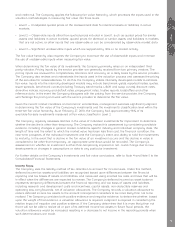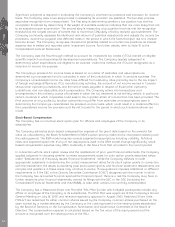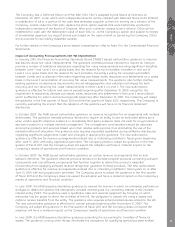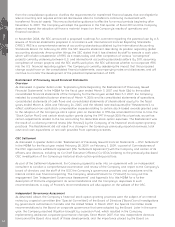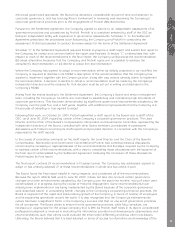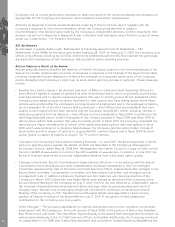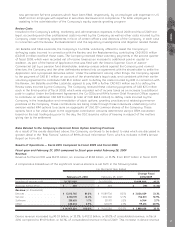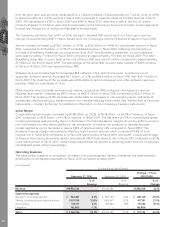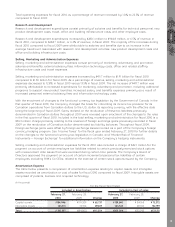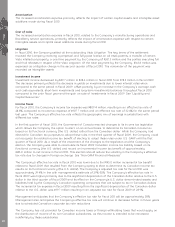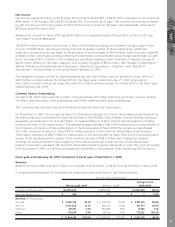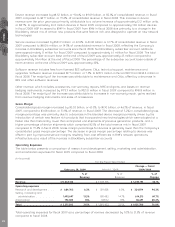Blackberry 2010 Annual Report Download - page 20
Download and view the complete annual report
Please find page 20 of the 2010 Blackberry annual report below. You can navigate through the pages in the report by either clicking on the pages listed below, or by using the keyword search tool below to find specific information within the annual report.
Significant judgment is required in evaluating the Company’s uncertain tax positions and provision for income
taxes. The Company uses a two-step process in assessing its uncertain tax positions. The two-step process
separates recognition from measurement. The first step is determining whether a tax position has met the
recognition threshold by determining if the weight of available evidence indicates that it is more likely than not
to be sustained upon examination. The second step is measuring a tax position that has met the recognition
threshold as the largest amount of benefit that is more than 50% likely of being realized upon settlement. The
Company continually assesses the likelihood and amount of potential adjustments and adjusts the income tax
provisions, income tax payable and deferred taxes in the period in which the facts that give rise to a revision
become known. The Company recognizes interest and penalties related to uncertain tax positions as interest
expense that is netted and reported within investment income. For further details, refer to Note 10 to the
Consolidated Financial Statements.
The Company uses the flow-through method to account for investment tax credits (“ITCs”) earned on eligible
scientific research and experimental development expenditures. The Company applies judgement in
determining which expenditures are eligible to be claimed. Under this method, the ITCs are recognized as a
reduction to income tax expense.
The Company’s provision for income taxes is based on a number of estimates and assumptions as
determined by management and is calculated in each of the jurisdictions in which it conducts business. The
Company’s consolidated income tax rates have differed from statutory rates primarily due to the tax impact
of foreign exchange differences, ITCs, manufacturing activities, the amount of net income earned in Canada
versus other operating jurisdictions and the rate of taxes payable in respect of those other operating
jurisdictions, and non-deductible stock compensation. The Company enters into transactions and
arrangements in the ordinary course of business in which the tax treatment is not entirely certain. In particular,
certain countries in which it operates could seek to tax a greater share of income than has been provided. The
final outcome of any audits by taxation authorities may differ from estimates and assumptions used in
determining the Company’s consolidated tax provision and accruals, which could result in a material effect on
the consolidated income tax provision and the net income for the period in which such determinations are
made.
Stock-Based Compensation
The Company has an incentive stock option plan for officers and employees of the Company or its
subsidiaries.
The Company estimates stock-based compensation expense at the grant date based on the award’s fair
value as calculated by the Black-Scholes-Merton (“BSM”) option-pricing model and is recognized rateably over
the vesting period. The BSM model requires various judgmental assumptions including volatility, forfeiture
rates and expected option life. If any of the assumptions used in the BSM model change significantly, stock-
based compensation expense may differ materially in the future from that recorded in the current period.
In connection with its stock option review and the restatement of prior year financial statements, the Company
applied judgment in choosing whether to revise measurement dates for prior option grants described below
under “Restatement of Previously Issued Financial Statements”. While the Company believes it made
appropriate judgments in determining the correct measurement dates for its stock option grants in connection
with the restatement, the issues surrounding past stock option grants and financial statement restatements are
complex and guidance in these areas may continue to evolve. If new guidance imposes additional or different
requirements or if the SEC or the Ontario Securities Commission (“OSC”) disagrees with the manner in which
the Company has accounted for and reported the financial impact, there is a risk the Company may have to
further restate its prior financial statements, amend its filings with the SEC or the OSC (including the
Consolidated Financial Statements and this MD&A), or take other actions not currently contemplated.
The Company has a Restricted Share Unit Plan (the “RSU Plan”) under which eligible participants include any
officer or employee of the Company or its subsidiaries. The RSU Plan was approved at the Company’s Annual
General Meeting on July 18, 2005 and received regulatory approval in August 2005. Restricted Share Units
(“RSUs”) are redeemed for either common shares issued by the Company, common shares purchased on the
open market by a trustee selected by the Company or the cash equivalent on the vesting dates established
by the Board of Directors or the Compensation, Nomination and Governance Committee of the Board of
Directors. The compensation expense is calculated based on the fair value of the equity award and the
amount is recognized over the vesting period of the RSU.
MD&A
12


